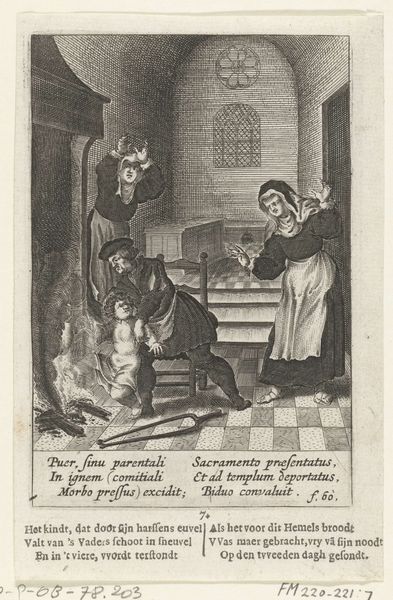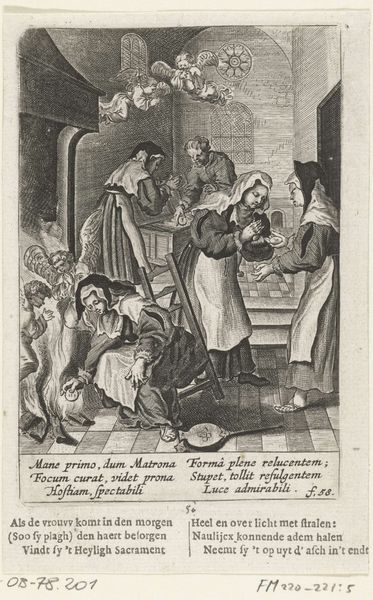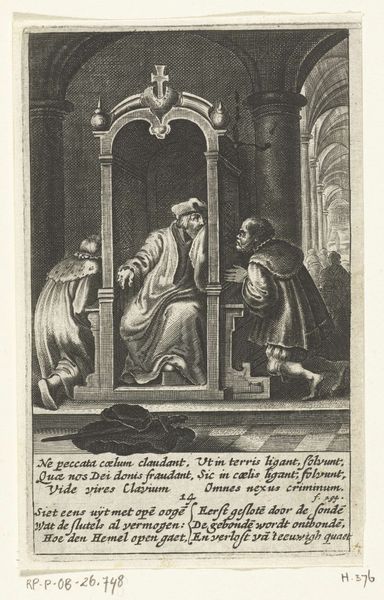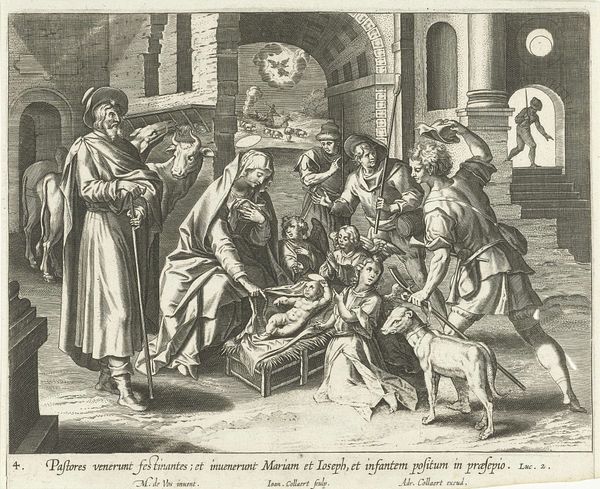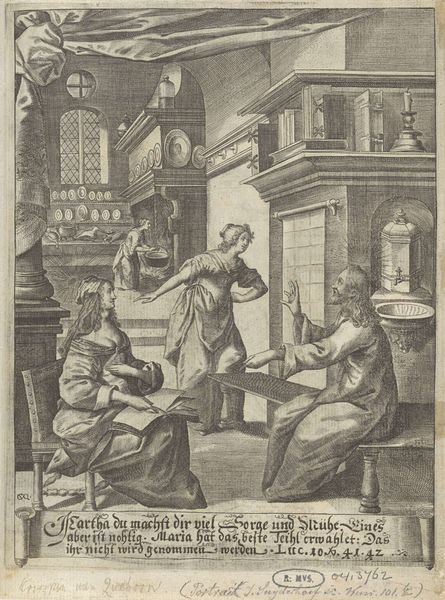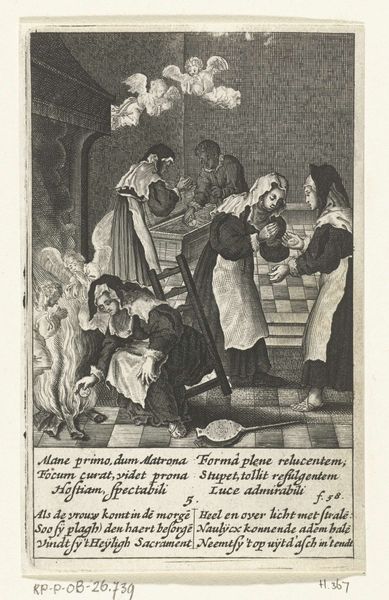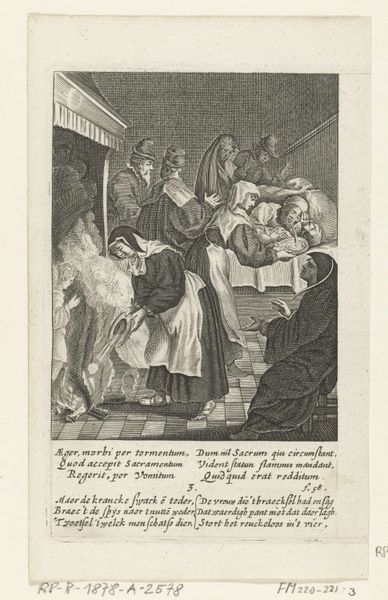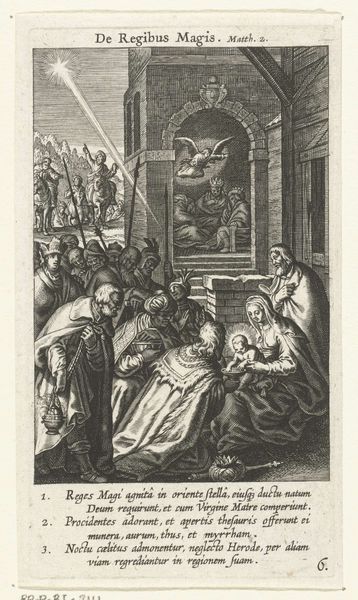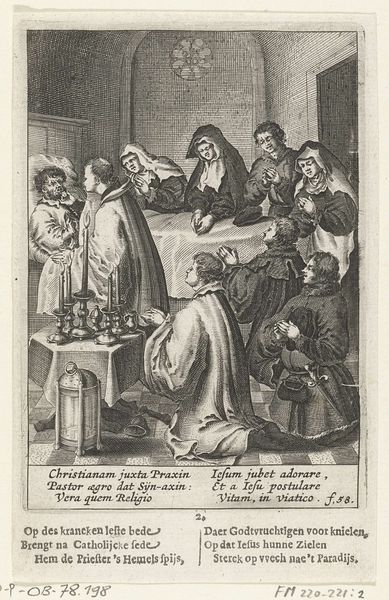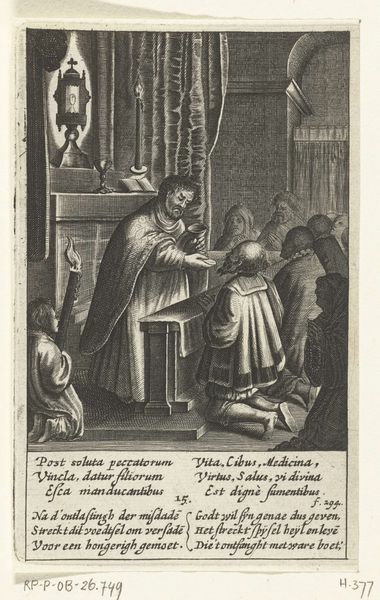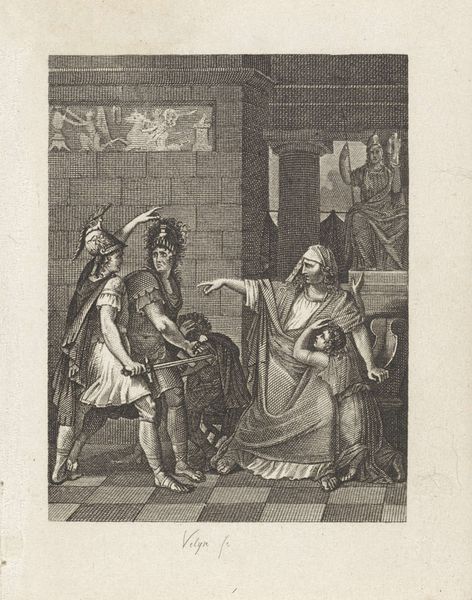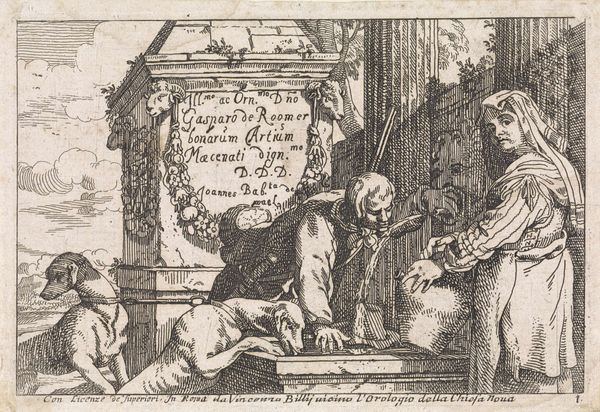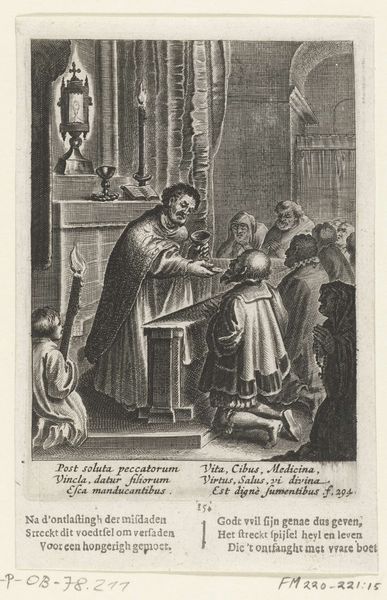
print, intaglio, engraving
#
narrative-art
# print
#
intaglio
#
old engraving style
#
traditional media
#
figuration
#
genre-painting
#
history-painting
#
northern-renaissance
#
engraving
Dimensions: height 134 mm, width 84 mm
Copyright: Rijks Museum: Open Domain
Editor: This intaglio print by Boëtius Adamsz. Bolswert, made sometime between 1590 and 1639, is titled "Kind valt van zijn vaders schoot in het vuur," or "Child falls from his father's lap into the fire." It depicts a chaotic scene, filled with anxiety. What historical context might inform our understanding of this rather disturbing imagery? Curator: This print isn’t just a depiction of a domestic accident; it’s deeply intertwined with religious and social anxieties of its time. The early modern period in the Netherlands, where Bolswert worked, was a time of intense religious upheaval. Can you see how the print juxtaposes domestic tragedy with the expectation of divine intervention, reflecting debates about faith, predestination, and the role of the church in everyday life? Editor: I do now. The text at the bottom mentions something about heavenly bread… So, you're saying the child's fall might represent a fall from grace, perhaps? Curator: Precisely! And notice the reactions of the figures: their gestures of despair, their plea for intervention. Consider them within the context of the Protestant Reformation, where personal faith and individual responsibility were increasingly emphasized. Do you see how the artist positions the family's crisis as both a personal failing and a moment where divine grace might be sought? Editor: It's like they're caught between reliance on religious ritual and a desperate need for a miracle. It’s fascinating to see how such everyday misfortunes could be interpreted through a religious lens. Curator: And it’s a commentary on power: paternal power, religious authority, even the perceived power of the "evil" illness mentioned in the inscription. It makes you think about who controls narratives and explanations during crises, doesn't it? Editor: Definitely. I’m beginning to see this print as less of a simple depiction and more of a battleground for cultural and religious ideologies. Curator: Exactly! It reveals the layers of belief and power embedded within a seemingly simple domestic scene. It challenges us to examine the complexities of early modern life and the ways in which individuals navigated a world rife with uncertainty.
Comments
No comments
Be the first to comment and join the conversation on the ultimate creative platform.
